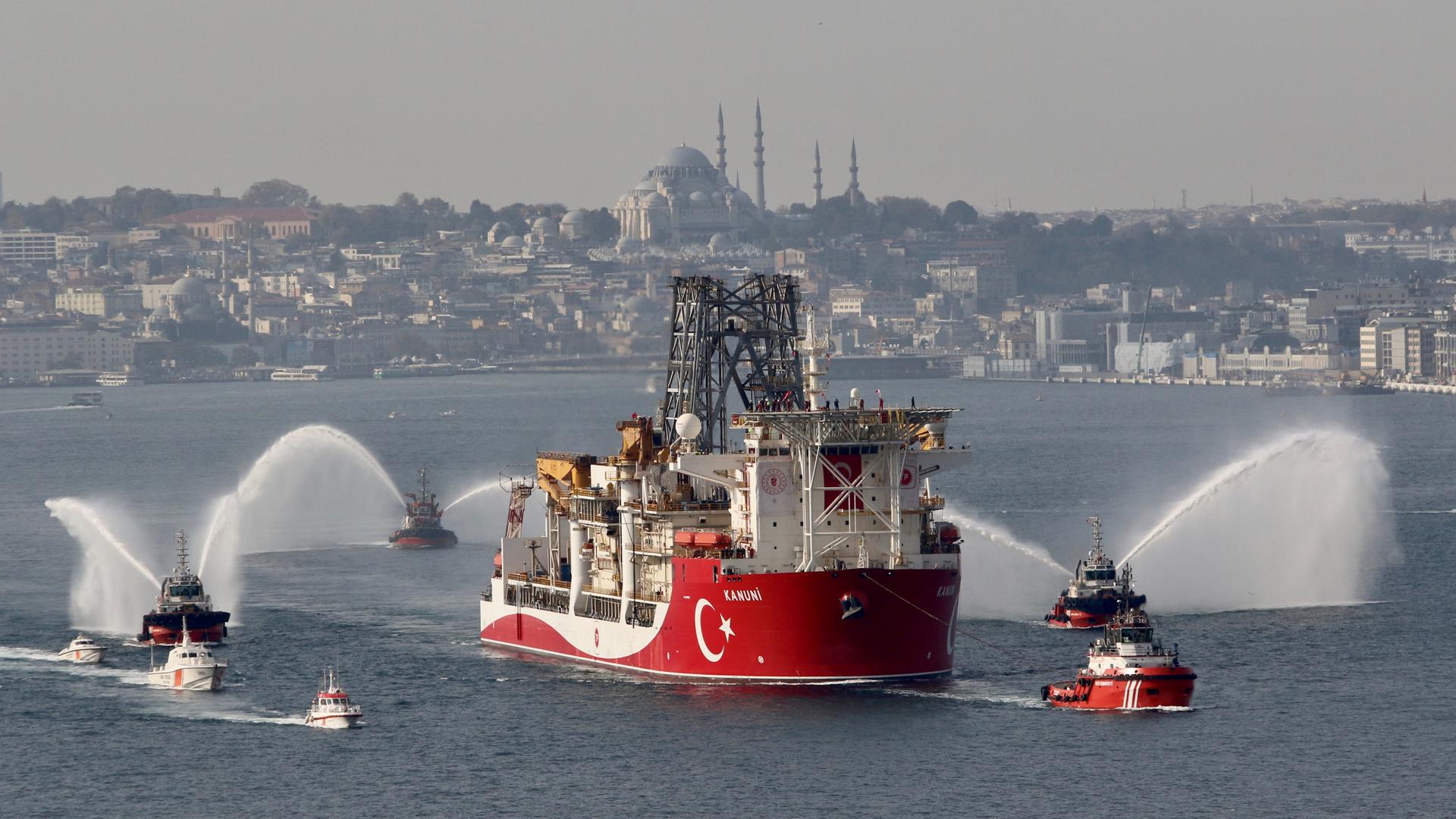Turkey’s third drilling ship, Kanuni, has set sail from Istanbul en route to the Black Sea to undertake maintenance work at the Port of Filyos on the Black Sea coast before it starts its mission at the Sakarya Gas Field.
Speaking at the launch ceremony in Istanbul’s Haydarpasa Port, Turkish Energy and Natural Resources Minister Fatih Donmez said Kanuni follows on from the Fatih drillship, which also set sail from the same location on May 29 for the Black Sea, where the ship discovered 320 billion cubic metres of gas (bcm) within only one month.
“The reserves discovered at Tuna-1 well in the Sakarya Gas Field were later revised up to 405 billion cubic meters and with that, we finalised our first drilling at Tuna-1,” Donmez said.
The discovery of this size could meet Turkey’s household gas demands for over 20 years, Donmez said, adding that to date, Turkey produced 16.8 billion cubic metres of gas but succeeded in discovering 24 times more gas from one single drilling.
READ MORE: Turkey finds natural gas reserve of 320 billion cubic metres off Black Sea
To attain similar results in the Black Sea, Kanuni was added to Turkey’s fleet at the beginning of this year.
After conducting required maintenance and upgrades in Mersin’s Tasucu Port, the ship arrived at Haydarpasa Port on Oct 19, Donmez explained.
“Here the ship towers were dismantled to pass under bridges in the Bosphorus. Today we are sending Kanuni to the Port of Filyos. The ship will be ready for new operations after tower reassembly, navigation tests, and after drilling equipment assembly and bottom-hole safety system maintenance works are finalised,” he said.
The Kanuni drillship, which was built by Samsung in South Korea in 2012, will start first drilling in the Black Sea early next year using its ability to drill to depths of 3,000 metres.
Brazilian energy company Petrobras used the drilling ship for exploration up to 2015.
READ MORE: Yes, Turkey can develop its Black Sea gas find by 2023
New drillings planned for east Mediterranean
Turning to Turkey’s operations in the eastern Mediterranean, Donmez also noted that the Yavuz drillship finalised operations at depths of 6,000 meters in the Selcuklu-1 well, where promising results were achieved.
He said new drillings would be conducted in areas adjacent to the well, following maintenance of the Yavuz vessel at the Tasucu Port in Mersin in the country’s south.
The Oruc Reis and Barbaros Hayreddin seismic research vessels are also operating in the Mediterranean, where the former collected two-dimensional data in the Demre-1 location offshore Antalya in a 6,822-km area, while the latter so far has collected data in an area totalling around 195,525 km, Donmez said.
“We will determine our locations for our next mission in the Mediterranean according to our seismic data analyses,” Donmez concluded.










Discussion about this post